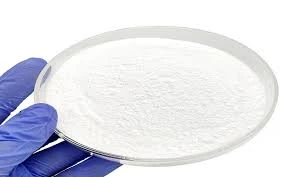Laser Marking Additives for Plastics Enhancing Identification and Branding
In today's fast-paced manufacturing environment, laser marking has emerged as a highly efficient and precise method for adding labels, logos, and other identifiers to various materials, especially plastics. The integration of laser marking additives into plastic formulations has revolutionized the marking process, offering enhanced versatility, durability, and aesthetic appeal. This article delves into the significance of laser marking additives, their mechanisms, and their role in modern applications.
Understanding Laser Marking
Laser marking is a non-contact technology that uses focused laser beams to etch or engrave markings on surfaces. Unlike traditional printing methods, laser marking does not require ink or contact with the material, which mitigates wear and reduces waste. The process can create high-contrast, permanent markings that withstand environmental factors, making it ideal for industries like automotive, medical devices, and consumer goods.
The Role of Additives
Laser marking additives are specially formulated compounds incorporated into plastic materials during the manufacturing process. These additives enhance the responsiveness of the plastic to laser radiation, leading to improved marking quality. They can be organic or inorganic based on the desired results and the type of laser being used.
1. Mechanisms of Action - Color Change Many laser marking additives are designed to change color upon exposure to a laser beam. For example, some additives might transition from a transparent state to a vibrant color or black, providing high contrast against the plastic substrate. This color change is often due to thermal decomposition or carbonization. - Foaming Agents Some additives can create a foaming effect when laser-activated, resulting in a raised surface texture that adds a distinctive tactile feel to the marked area. The resulting texture can enhance both the visual appeal and the grip of the product.
2. Types of Additives - Colorants Dyes and pigments that provide color contrast when exposed to laser light. Selecting the right colorant compatible with the plastic matrix is crucial for achieving optimal results. - Fillers Inorganic fillers such as titanium dioxide can help in reflecting laser light, enhancing the marking process’s efficiency.
- Foaming Agents These can produce a 3D effect on the marked surface, offering a unique aesthetic for branding purposes.
Applications Across Industries
laser marking additives for plastics

The versatility of laser marking additives makes them suitable for a wide range of industries
.- Automotive Industry Manufacturers use laser marking on vehicle components for part identification, manufacturing dates, and barcodes to streamline logistics and ensure traceability. - Medical Device Production In this field, laser marking provides essential information such as sterilization symbols, expiration dates, and tracking codes directly on products, which is crucial for compliance with industry regulations. - Consumer Goods For items such as electronics, household products, and packaging, laser marking enables brands to incorporate logos and product information, enhancing visibility and consumer recognition while ensuring durability against wear and tear.
Advantages of Using Laser Marking Additives
1. Durability Markings created with laser marking additives are resistant to scratching, fading, and corrosion, ensuring product integrity over time.
2. Efficiency The non-contact nature of laser marking reduces material waste and processing time, thus lowering production costs.
3. Flexibility Different plastics can be easily adapted for laser marking, enabling manufacturers to modify their products without significant changes to the existing processes.
4. Eco-Friendliness By eliminating the need for ink and solvents, laser marking is a more environmentally sustainable option, contributing to reduced chemical waste.
Conclusion
As industries continue to evolve, the significance of laser marking additives for plastics in enhancing product identification and brand visibility cannot be overstated. By improving marking efficiency and durability, these additives ensure that the products not only meet regulatory standards but also resonate with consumers, ultimately enhancing overall market competitiveness. The ongoing development of newer and more effective additives promises to further advance the capabilities of laser marking technology, paving the way for innovative applications in the future.

